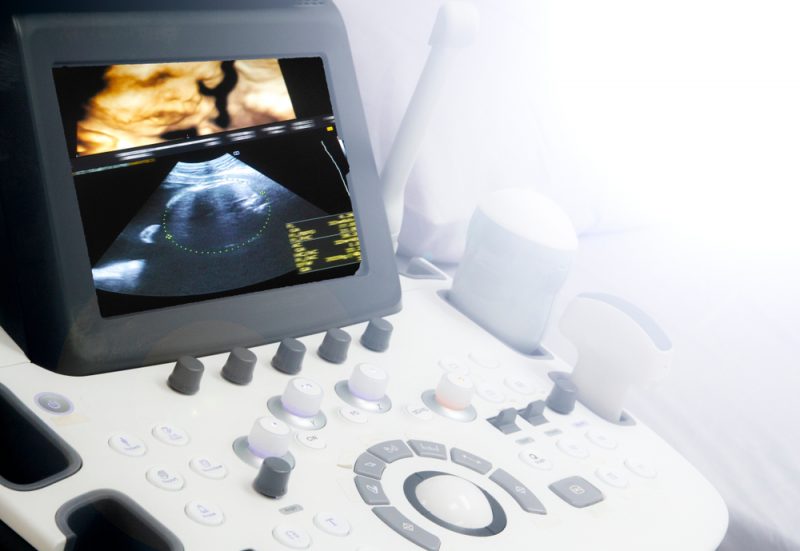National Ultrasound
Top Considerations When Buying 3D & 4D Ultrasound Machines

Two-dimensional (2D) ultrasound imaging is one of the most commonly used diagnostic tools for detecting abnormalities and identifying medical conditions. However, it has its limitations as it can present images in only one plane or at a specific angle.
In contrast, advanced imaging like 3D and 4D ultrasounds allow dynamic visualization of the anatomy in real-time, enabling practitioners to make more accurate and quicker diagnoses. 3D ultrasound is produced from a series of 2D ultrasound images captured from different angles. Going one or several steps further is the 4D ultrasound, which shows a 3D ultrasound in motion.
3D/4D ultrasound machines provide clearer and more detailed images that improve diagnostic confidence, reducing patient wait-times, increasing efficiencies, and improving patient outcomes. As a result, 3D and 4D real-time ultrasounds are used in a variety of clinical exams and a wide range of specialties including obstetrics, cardiology, urology, gynecology, internal medicine, fetal cardiology, musculoskeletal, and ophthalmology.
Top 7 Factors to Consider When Purchasing a 3D/4D Ultrasound Machine

At this point, you’re probably wondering how much do 3D ultrasound machines cost and whether they’re worth the investment. Equipping your clinic with a 3D or 4D ultrasound machine can add tremendous value to your practice. It can help increase diagnostic accuracy while improving your practice’s efficiency and patient turnaround. In addition, you can generate new revenue streams by expanding the range of your diagnostic services.
All in all, purchasing a 3D ultrasound machine has significant benefits but it’s also an investment that requires careful thought and analysis. Because of this, it’s important to consider all aspects when choosing an ultrasound system.
Before finding the perfect fit for your practice, it’s crucial to list and prioritize your requirements. While some clinics can manage quite well with a basic machine, others might require a high-end model with advanced functionality and features. Still, others need a machine that lies somewhere in between these two extremes. While you’re seeking the right fit for your clinic, make sure to take your budget into consideration.
To assist you in making the right choice, we’ve compiled a list of the most important factors to consider when buying a 3D/4D ultrasound machine:
1. Establish the Budget
How much do 3D ultrasounds cost? Before you begin to explore the price factor of 3D/4D ultrasound models, it’s important to establish your overall budget. While you’re determining your budget, be sure to account for upfront costs as well as additional and subsequent costs. These costs can be maintenance and support costs, training, delivery, and installation. Basic training is provided when you purchase any ultrasound machine but if you want more in-depth training that aims at easing the transition from 2D to 3D for your staff, you’ll incur additional costs over and above the purchase price.
If you’re set on buying branded equipment that costs much more than what your budget permits, you can consider opting for refurbished or pre-owned machines. This is usually not recommended because maintenance and upkeep costs can quickly add up.
2. Functionality, Features, and Probes
What specialties and exam types would you be using the 3D ultrasound machine for? Is it for OB/GYN, cardiology, musculoskeletal, or any other? Answering these questions can help you find the right fit for your practice and budget.
Based on the possible target applications of the machine, it would be much easier to determine the functionality and probes required for the type of care your clinic provides. While you’re determining the features, it’s good to distinguish essential features from ones that you don’t need but would add great value to your practice. How much more would you be willing to spend on the added features and options?
For instance, some features like advanced speckle reduction imaging and spatial compound imaging enhance the quality of imaging. Other features like one-touch optimization and software presets increase clinical efficiencies by providing a more streamlined workflow.
The aim of your purchase should naturally be to obtain as many features as possible within the given budget. A good ultrasound system with multiple configurations may be just what you need for your practice.
3. Portability
If you plan on investing in a single ultrasound system that can be used in your clinic as well as onsite, a portable machine would work best. But if you’re planning on using the equipment in two practices, consider using two different trolley-based systems.
There are multiple considerations when shopping for portable ultrasound machines. Although not all portable equipment can offer universal quality imaging, some portable systems offer better quality imaging that is almost comparable to that of trolley-based systems. They also have select features or sets of transducers that stationary systems offer opposed to the full package.
Laptop-style systems typically restrict usage to a small keyboard and monitor which is great if you’re tight on space but is also a factor that needs to be considered when thinking about analysis of ultrasound scans. It’s best to consider all benefits and limiting factors of portable ultrasound machines when deciding whether to opt for a console system or portable equipment.
4. Support and Maintenance
The type of warranty and service that’s included in the price of the machine is another major factor that impacts the cost and efficiency of your practice.
In the event that the ultrasound system breaks down and needs to be repaired, how quickly can the manufacturer or supplier send service staff to fix the issue? If a part has worn out and needs replacement, how long would it take to ship a spare one to your facility? Most new ultrasound machines will come with a 2, 3 or 5 year warranty so to prevent downtime or lack of care for your patients, manufacturers and suppliers will provide loaner equipment free of charge while your system is being repaired.
Support and maintenance contracts are extremely important as even the most robust, high-end, and expensive equipment is subject to wear and tear. Regardless of the type of system, some common parts that require replacement are monitors, keyboards, power supplies, and control panels. Ensure that your supplier stocks these replacement parts so your practice is not out of commission. Lastly, be sure to examine the terms and conditions, as well as the duration of the service and maintenance agreement.
5. How Much Do 3D/4D Ultrasound Machines Cost?
How much do ultrasound machines cost? One of the most crucial factors that will impact your choice of system is naturally the price factor. Given the cost of ultrasound systems, especially high-end ones, purchasing an ultrasound system is indeed an investment.
But cost shouldn’t be the most crucial factor to drive your purchase decision. Given that most modern ultrasound systems continue to function well through 5-7 years of age before they have to be replaced, they provide a good return on investment. In the long run, how much an ultrasound system costs is less relevant than the value and functionality it offers.
However, if you were to estimate how much 3D ultrasound machines cost, on average, there’s a wide price range to consider. There’s likely a machine that suits every budget. The broad range of 3D ultrasound machine prices is between $15,000 and $220,000 while a large variety of equipment falls in the $20,000 and $75,000 cost bracket.
6. Additional Costs
Maintenance and service contracts, delivery, printer price, installation, and training are additional costs that must be factored in while estimating the total cost of an ultrasound system. A maintenance contract fee typically stands at 15% of the upfront cost or purchase price. Budget an additional $300 for delivery and between $1,000 and $3,000 for printers.
7. Lease Equipment
If the upfront costs are too high, consider leasing a good quality ultrasound system instead of purchasing a low-end machine that may not meet all your requirements. Why compromise on quality and functionality by buying a system that offers limited features and mediocre imaging? Leasing is a great option as it allows you to buy a good quality ultrasound system at relatively low monthly rates.
We hope we answered some of your most burning questions like how much are 3D ultrasound machines or what benefits they offer. Consider all factors when selecting the right 3D/4D ultrasound machine for your practice. Choose from National Ultrasound’s wide variety of branded 3D and 4D ultrasound machines for sale, including the latest GE, Phillips, and Samsung ultrasound machines. If you need professional guidance on selecting the right machine that fits your requirements, don’t hesitate to reach out. Contact National Ultrasound to speak with our representatives who will evaluate your requirements and fit you with the right system and the right configuration that exactly matches your requirements!

